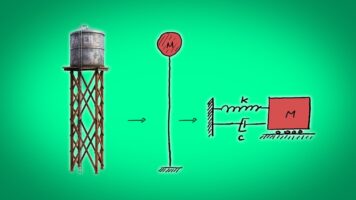STRUCTURAL ANALYSIS TECHNIQUES: STATICS VS. DYNAMICS
Structural Analysis Techniques: Statics vs. Dynamics
Structural analysis is a fundamental aspect of engineering and architecture, aimed at understanding how forces and loads affect the stability and behavior of structures. Two primary approaches to structural analysis are statics and dynamics, each serving distinct purposes and yielding valuable insights into structural design and performance. In this article, we’ll explore these techniques, highlighting their key points and differences.
Statics: The Study of Equilibrium
1. Equilibrium: Statics is concerned with structures in a state of equilibrium, where all forces and moments are balanced, resulting in a constant or zero velocity. This approach is particularly useful for analyzing structures that experience steady loads, such as buildings and bridges.
2. Simplified Assumptions: Static analysis relies on simplifications, assuming constant loads and material properties. This simplification allows for straightforward calculations but may not capture dynamic effects like vibrations and oscillations.
3. Mathematical Formulas: The analysis primarily involves the application of mathematical equations and principles, such as the equilibrium of forces and moments. These equations are typically linear and easier to solve.
4. Limitations: Statics cannot assess dynamic events, such as earthquakes or wind-induced vibrations. As a result, it is unsuitable for evaluating structures that experience time-varying loads or dynamic forces.
Dynamics: The Study of Motion and Response
1. Motion and Response: Dynamics, on the other hand, focuses on how structures respond to dynamic loads and disturbances. It considers time-varying forces, accelerations, and deformations, making it crucial for analyzing systems subjected to impacts, vibrations, or seismic events.
2. Realistic Representation: Dynamics provides a more realistic representation of how structures behave under various conditions. This approach is essential for evaluating the performance of structures in motion, such as vehicles, machinery, and aerospace components.
3. Complex Equations: Dynamic analysis involves solving differential equations and considering nonlinear behaviors, making it more complex than static analysis. Numerical methods, such as finite element analysis, are often employed for accurate predictions.
4. Safety Considerations: Dynamics plays a critical role in assessing the safety and stability of structures subjected to unpredictable dynamic events, ensuring that they can withstand sudden shocks or vibrations without failure.
When to Use Statics and Dynamics
Statics:
- Steady Loads: Use static analysis for structures subjected to constant or slowly changing loads, such as buildings and traditional bridges.
- Simplicity: Statics is ideal for initial design and quick assessments, as it involves straightforward calculations.
- Economical: Static analysis is cost-effective, as it requires minimal computational resources.
Dynamics:
- Dynamic Loads: Employ dynamic analysis for structures that experience time-varying loads, like earthquake-resistant buildings, vibrating machinery, and aerospace components.
- Safety-Critical: Structures that must withstand sudden, unpredictable forces or vibrations require dynamic analysis to ensure safety and reliability.
- Complex Scenarios: For complex scenarios with multiple degrees of freedom and nonlinear behaviors, dynamic analysis is indispensable.

In conclusion, statics and dynamics are complementary tools in structural analysis. Statics is excellent for understanding equilibrium and simple load conditions, while dynamics is essential for assessing the response of structures to dynamic forces and disturbances. The choice between these techniques depends on the nature of the structure, the loads it will experience, and the level of accuracy required to ensure safety and performance. By carefully selecting the appropriate analysis method, engineers and architects can design structures that meet their intended purposes while ensuring safety and reliability.


